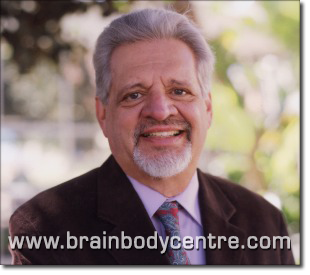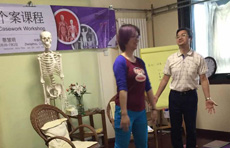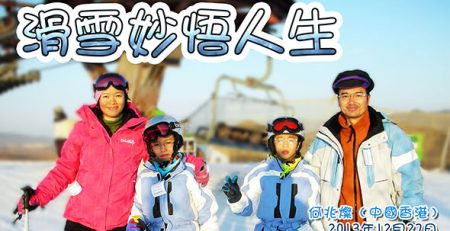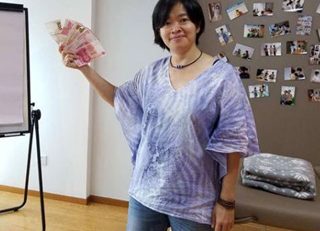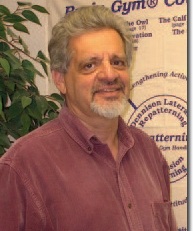Why I Chose Action Research Over the Ivory Tower
Paul Dennison, Jan 12, 2015, U.S.A.
I recently taught a hundred parents, educators, and occupational therapists in Austria and Germany, and this month I’ll be teaching in Australia and Indonesia. Yet, when I started my career – as a public school teacher and certificated reading specialist in Los Angeles – I had no idea I’d ever teach abroad in a score of countries. As one who’d experienced many early learning challenges, I was aiming only toward a doctorate in education so that I could give support to struggling young learners.
Starting in 1968, I taught first- and third-grade classes at the Malabar Street School in East Los Angeles. There, I was privileged to be one of a select team of teachers doing daily in-service training as an assistant to Dr. Constance Amsden, a professor at Cal State Los Angeles, in her innovative three-year research program, ” The Malabar Reading Project for Mexican-American Students.”
Joining the faculty at Malabar Street School was a pivotal experience for me. It was there that I first observed, while working with children, how true learning can always be identified by the satisfaction it brings. At Malabar, I saw the value of sensory learning. I also realized that the most effective teaching acknowledges learners where they are, and then fosters in them an intrinsic motivation to explore the new and unknown.
Later, drawing on my grounding in pedagogy from Cal State (thanks to my mentors there, Dr. Amsden and Dr. Roderick Langston) I arrived at the University of Southern California at the top of my class. My professor and doctoral advisor, Charles M. Brown, encouraged me, telling me: “Your understanding of the philosophy, psychology, and process of teaching is the best I’ve yet seen. Paul, you know more about reading and the reading process than anyone I have met. I love having you in my classes – love what you bring to the discussion.”
Under Dr. Brown’s guidance, I went on to complete my doctorate in education, and received an award for outstanding research on the relationship of covert (silent) speech, or auditory processing, to beginning reading achievement. Although auditory processing ability is important, my research suggested that other modalities were also essential for reading acquisition.
My advisors had recommended that I continue my research into early reading, and I at first considered doing so. Yet I soon saw that even important new research isn’t always effectively applied in the classroom. I realized that I didn’t want to be stuck in an ivory tower, conducting studies whose findings might never be implemented. I wanted to make a more direct contribution to the lives of young learners.
A Big Aha!
In 1970 I opened a reading center in the San Fernando Valley, and, while completing my doctoral studies and continuing to teach at all grade levels, I met and worked with several developmental optometrists. I began reading the extensive research gathered by the Optometric Extension Program, and recognized how this clarified my own dissertation studies and findings. Thanks to my optometrist associates, who used movement experiences in their vision-training work, I realized with a big aha! that it’s the lack of specific physical skills related to focal attention, rather than language development, that disrupts the early reading process. I saw that many learners are not able to move their eyes together into the left and right visual fields, or to move their eyes separately from the movement of the rest of the body. Movement is the missing link that prepares beginning readers to achieve.
Learners experience less stress and greater ease when they can work in the midfield, where the two visual fields overlap.
As I applied my studies in the classroom, I continued to see, from observing the children, that learning to read requires many abilities – not any one alone. The best beginning readers were skilled not only in silent speech, but also in the visual, kinesthetic, and tactile modalities. To verify that the skills of reading can be readily acquired through a multidisciplinary approach, I initiated my own “action research” with students of all ages and social backgrounds.
In this endeavor, I used each five-step lesson plan (called a balance) to convey the learning as something specific, relevant, measurable, and transferable. The students learned to ready themselves for learning (an early version of what is now known as the PACE process), and then noticed their baseline skills, determined for themselves the next appropriate steps in their learning process, experienced how movement provided them with more resources for accessing the learning, and enjoyed their immediate improvements.
The best advice I have for helping students to learn is to ask them what’s going on for them. For example, during that time I volunteered to tutor many youngsters – including eight-year-old Javier, who was in the ESL program at Malabar Street School and wasn’t yet learning to read. Everyone assumed that his reading delays were due to his lack of English language skills. Yet one day I asked him what was going on for him, and he answered that the words on the page were “jumping.”
I used the new Edu-K work I was developing to give Javier a balance for using both eyes together as he crossed his visual midline, a skill necessary for reading with ease. As he picked up his book a second time, only minutes later, he could point his eyes steadily at each word. He now read with fluency, and with an ease and comprehension that his mother and I hadn’t heard from him before.
Bilateral Learning
As a classroom educator, I soon learned that two hands are better than one, two eyes are better than one, and a whole body moving is more ready to learn than one sitting and staring. I call this whole-brain integration.
I support children (and adults) in experiencing how to “locate themselves” in space through proprioception. Spatial orientation is the ability to represent the location of objects with respect to oneself. I find that the inability to do so is evidenced by such signs as an avoidance of the body’s midline, where the left and right visual fields overlap. Imbalance also shows up as chronic difficulty in sitting in a chair, a twisting of the hips, an inclination to avoid using the non-dominant hand, a tilting of the head, and various reading and learning challenges.
Yes, youngsters can easily avoid the midline and still learn in a one-sided way. They can even get good grades that way, yet they’ll do so under needless strain. I see that, although not yet well recognized as such, the challenges that show up, now or later, in the form of stress or health problems often stem from an inability to maintain sensory integration during the learning process.
Students having difficulty in the classroom can develop their innate abilities by learning how to cross the midline and work in the midfield, using both left and right sides to process visual, auditory, tactile, and kinesthetic experiences. I see daily how learners who reconnect this way with whole-body movement patterns discover a natural love of learning.
Realizing the importance of whole-body movement, I went on to develop Dennison Laterality Repatterning and Three Dimension Repatterning*, processes that have helped thousands to better coordinate whole-body movement with eye movement. I also used these processes to help integrate the asymmetrical and symmetrical tonic neck reflexes and other infant reflexes** that, when unintegrated, can otherwise pull us out of structural and focal alignment.
I believe that the visibility of my last thirty plus years of innovative work with learners worldwide has stimulated some good research supporting my move-to-learn premise as well as many other premises of my work, and that time will reveal the commonsense basis of Edu-K thinking.
Meanwhile, I see my consultation time as an opportunity to show each learner how to let go of fixed ideas he might have about his abilities and discover learning as an active process. I love being in the moment with students, helping them move, learn to play, and learn to learn.
As I reflect on my life thus far, I can say that I’ve never regretted not choosing a career of research design but following one of active, experiential teaching in which I’m privileged to make a difference in the lives of so many individuals.
*The intention behind the Dennison Laterality Repatterning and Three Dimension Repatterning processes is to make habits of movement easier and more efficient, and so to free thought for choice, expression, and creativity. These simple processes are taught in Brain Gym® 101: Balance for Daily Life.
**The Edu-K work also addresses asymmetrical and symmetrical tonic neck reflexes in the Total Core Repatterning course.
© 2015 by Paul E. Dennison. All rights reserved.
Brain Gym® is a trademark of Brain Gym® International/the Educational Kinesiology Foundation. Click here for the name of an instructor near you. Note: There are more than 100 action research studies, done independently (though not peer reviewed), on the effectiveness of various Brain Gym® activities. Click here to see years 1988 ¡V 2000 in the Research Studies Packet, the balance are listed in the FAQs (same link) and Brain Gym Journal and Global Observer archives.

